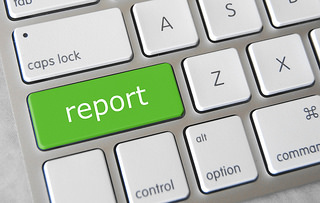
Writing can be a laborious task. Even if you have an innate talent, report writing is a skill that requires nurturing, refinement and constant practice. You might be one of many who find writing to be a daunting task, something that is difficult or tedious regardless of how many reports you’ve authored. Thankfully, there are a number of tools that can help curtail the intimidation factor.
This post is one of four in a series designed to highlight some of those tools. Let’s start with one of the basics: an Editorial Calendar.
What is an editorial calendar?
An editorial calendar is a pre-planned schedule that maps out the focus of each report ahead of delivery – something that may be very valuable for lengthy programs with lots of reporting. Traditionally used by publishers as a strategy for controlling content, it carries several benefits when used for reporting purposes.
- First, it identifies key reporting topics as defined by your measurement plan.
- Second, it helps you visualize and communicate your reporting strategy.
- Third, it can reduce some of the stress inherent with report writing (e.g., looking for an interesting area of focus within a tight time frame).
Prior to drafting your editorial calendar, it’s helpful if you have an initial understanding of both your client’s needs and expectations and your program’s research objectives and measurement plan. Having a clear understanding of both of these will help you select the most appropriate reporting topics. The calendar can then be used as a point of communication between your team and your client to ensure that you are all on the same page at the same time.
Application of an editorial calendar to experiential marketing
Let’s say that you are executing an experiential marketing program over the course of six months with monthly report delivery. Your objectives are to:
- Ensure sampling and consumer interaction goals are met – say, an average of 75 samples distributed per event and 75 consumer interactions per event
- Engage with consumers in the target profile ( males 22-29)
- Identify strength (high product awareness) and opportunity (low product awareness) markets
- Identify which event types have the greatest impact
Ideas for reporting can be drawn directly from these objectives:
- Month 1: Initial data trends
- Month 2: Month-to-month comparison
- Month 3: Sampling goals and consumer interactions
- Month 4: Focus on target consumer reach
- Month 5: Focus on regional differences
- Month 6: Focus on event type analysis
This does not mean that the Editorial Calendar is set in stone. Things may come up through the course of the program that requires you to adjust your focus for reporting. However, this tool helps you strategically plan your report writing structure, which in turn can reduce your stress levels. Who knows where that can take you? As stress diminishes, you might even discover that you enjoy report writing!
Photo Source: www.gotcredit.com
